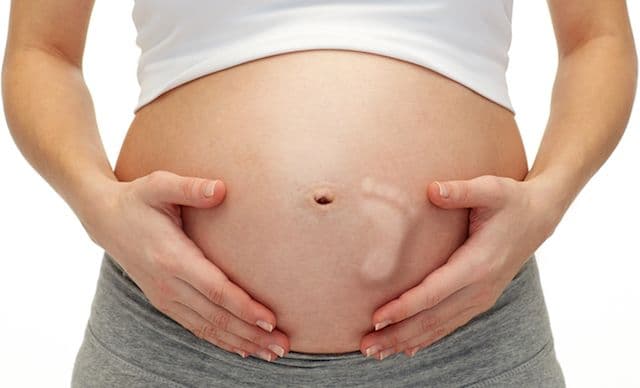Counting Fetal Movements: The Baby Kick Count
Pregnancy Tools
Obie Editorial Team

Most women feel the baby's first movements after 18-20 weeks of the pregnancy. A baby or fetal kick count is among the most important observations to ensure the baby's health. It is among the most important observations to ensure the baby's health.
Check out our interactive baby kick count tool!
An active baby is usually a healthy baby and you usually feel your baby stretch, kick, roll and turn every day. Some babies are more active than others. All babies have periods of sleep during which they are not as active. You will get to know your baby’s pattern of movements and when your baby is most active.
Is a fetal kick count effective in reducing adverse outcomes?
In some studies, decreased fetal movement has been associated with poor pregnancy outcomes including stillbirth, and about 50% of women with a stillbirth reported that they felt a gradual decrease of fetal movements before intrauterine death. This is why many women and doctors use a fetal movement count to assess the baby's well-being.
Recently, however, some studies have questioned whether decreased fetal movement can prevent poor perinatal outcome such as stillbirths. In a recent 2018 study in The Lancet the authors did not find a decrease in stillbirths with decreased fetal movements.
Maternal perception of decreased fetal movement has been reported in 15% of pregnancies during the third trimester and around 50% of women notice a gradual reduction of fetal movement days before intrauterine death.
When will I feel my baby kick?
Most women will feel the baby's movements after 18-20 weeks of the pregnancy. You should feel movements throughout the day, each day from 24 weeks of the pregnancy until the baby is born. The fetal kick count is done usually after 24 weeks of the pregnancy to monitor the fetal health.
How to do a kick count
There are many different ways to do a kick count. Here is the "count-to-ten" method to do the Kick Count (Download the graph here):
- Count fetal movements once a day, preferably at the same time every day and within 1 to 2 hours after a meal. Early evening after dinner is a good time because the fetus is usually more active then.
- Get a sheet of paper and pen to indicate the movements.
- Have a clock or watch nearby to observe the time passed.
- Lie on your side while counting, preferably on your left side.
- Mark down the start time.
- Count any movement you feel - a roll, a kick, or a "swish" - except for the smallest flutters.
- Count until you have felt ten fetal movements.
- Ideally, you want to feel at least 10 movements within 2 hours. Most likely you will feel 10 movements in much less time
- Mark down the finish time, and the total amount of time it took to count the ten movements.
Talk to your doctor or midwife about what you should do if there's a problem with your baby's movements. Many providers ask their patients to contact them or go to the labor and delivery unit if:
- You don't feel your baby move all day.
- It takes progressively longer from one day to the next to count four movements.
- It takes more than an hour to count four movements.
You might want to start a notebook of your own or use a fetal kick chart to record the time you start, place a checkmark for the time of the 10th movement. This will help you observe patterns and discover how long it normally takes for your baby to move 10 times. Keep in mind that you are looking for significant deviations from the pattern.
What is the best time and position to do the kick count?
Try to schedule the kick count during your baby's most active time of day, but also when you will be able to record movements over three or four hours. You will need to record movements starting from about the same time each day.
You may want to have a meal or snack before starting as you probably have noticed, food often makes your baby active. Alternatively, try a few minutes of exercise or take a brisk walk. Some moms prefer sitting with a good backrest with their arms holding their belly. Other moms prefer lying on their left side, which they find most effective for monitoring their baby. Lying on your left side also allows for the best circulation which could lead to a more active baby. Be sure you have a clock in view, and note on the kick count chart what time you start to record movements.
When should I call my physician or midwife?
Your doctor may ask you to count your baby’s movements once every day. Count your baby’s movements to be sure that you feel at least 10 (in Canada some say 6) movements in 2 hours. If you think there is a decrease in your baby’s movements this is an important sign that your baby may not be well.
If you haven't concentrated on counting the baby movements then it's possible you may have missed them. Focus on the baby movements and count your baby's movements, lie on your left side with support under your bump. Stay still for a couple of hours, during which time you should feel at least 10 separate movements.
You're more likely to be aware of your baby's movements when you're lying down rather than sitting, and you'll probably be least aware of them when you're standing.
Here are some quick ways to encourage your baby to move:
If your baby starts to move around, all is probably well. But keep an eye on his movements from now on, and seek help sooner rather than later if you have any concerns.
- If you have followed the above recommendations and have not felt 10 kicks by the end of the second hour, wait a few hours and try again. If after trying a second time, you do not feel 10 movements within 2 hours you should contact your healthcare provider.
- If you notice a significant deviation from the pattern over the course of 3 to 4 days.
- Put your feet up, have a snack, and relax. Your baby may be rocked to sleep while you're moving around, in which case he may wake up when you stop and have something to eat.
- Have a really cold drink. Your baby may feel the change in temperature and try to move away from it. A sugary cold drink may also give him a sugar boost to encourage movement.
Make some noise. - Play loud music or slam a door to see if he responds.
How to manage reduced fetal movements?
There are several recommendations how to address decreased fetal movements after 28 weeks of the pregnancy. In addition to check for risk factors of stillbirth additional recommendations include:
- Delivery if 39 weeks or more pregnant
- Nonstress testing
- Check a blood test for fetal-maternal hemorrhage (Kleihauer-Betke test)
- Sonogram to make sure the fetus is not too small
Literature on reduced fetal movements and outcomes
A recent study in The Lancet showed no reduction of stillbirth when women reported reduced fetal movements. However, the study did not mention how they defined "reduced fetal movements" making it difficult to interpret the findings. An editorial claimed that encouraging awareness of reduced fetal movements may be harmful. “note that the advice to pregnant women in the study ‘was that they should monitor changes in movements from 24 weeks and that they should refer themselves immediately if they detected altered movement after 28 weeks.’” The editorialists observed, “With hindsight, the recommendation to encourage mothers to report changes from as early as 28 weeks might have been misguided.” They added, “Although overall deaths were not stratified by duration of gestation, it is plausible that limiting awareness campaigns to beyond 37 weeks would be safer.”
Sources:
Grant, A., Valentin, L., Elbourne, D., & Alexander, S. (1989). Routine formal fetal movement counting and risk of antepartum late death in normally formed singletons. The Lancet, 2, 345–349. https://doi.org/10.1016/S0140-6736(89)90572-9
Heazell, A. E. P., Budd, J., Li, M., et al. (2018). Alterations in maternally perceived fetal movement and their association with late stillbirth: Findings from the Midland and North of England stillbirth case-control study. BMJ Open, 8, e020031. https://doi.org/10.1136/bmjopen-2017-020031
Mangesi, L., Hofmeyr, G. J., Smith, V., & Smyth, R. M. (2015). Fetal movement counting for assessment of fetal wellbeing. Cochrane Database of Systematic Reviews, 10, CD004909. https://doi.org/10.1002/14651858.CD004909.pub3
NHS England. (2016). Saving babies' lives: A care bundle for reducing stillbirth. https://www.england.nhs.uk/wp-content/uploads/2016/03/saving-babies-lives-care-bundle.pdf
Norman, J. E., Marlow, N., Messow, C. M., et al. (2016). Vaginal progesterone prophylaxis for preterm birth (the OPPTIMUM study): A multicentre, randomised, double-blind trial. The Lancet, 387, 2106–2116. https://doi.org/10.1016/S0140-6736(16)00337-7
Sovio, U., White, I. R., Dacey, A., Pasupathy, D., & Smith, G. C. S. (2015). Screening for fetal growth restriction with universal third-trimester ultrasonography in nulliparous women in the Pregnancy Outcome Prediction (POP) study: A prospective cohort study. The Lancet, 386, 2089–2097. https://doi.org/10.1016/S0140-6736(15)00131-2
Stacey, T., Thompson, J. M., Mitchell, E. A., Ekeroma, A., Zuccollo, J., & McCowan, L. M. (2011). Maternal perception of fetal activity and late stillbirth risk: Findings from the Auckland Stillbirth Study. Birth, 38, 311–316. https://doi.org/10.1111/j.1523-536X.2011.00490.x
Thornton, J. G., Hornbuckle, J., Vail, A., Spiegelhalter, D. J., & Levene, M. (2004). Infant wellbeing at 2 years of age in the Growth Restriction Intervention Trial (GRIT): Multicentre randomised controlled trial. The Lancet, 364, 513–520. https://doi.org/10.1016/S0140-6736(04)16811-9
Tveit, J. V., Saastad, E., Stray-Pedersen, B., et al. (2009). Reduction of late stillbirth with the introduction of fetal movement information and guidelines—A clinical quality improvement. BMC Pregnancy and Childbirth, 9, 32. https://doi.org/10.1186/1471-2393-9-32
Walker, K. F., Bugg, G. J., Macpherson, M., et al. (2016). Randomized trial of labor induction in women 35 years of age or older. The New England Journal of Medicine, 374, 813–822. https://doi.org/10.1056/NEJMoa1509117
Yaffe, H. (1973). Daily fetal movement recording and fetal prognosis. Obstetrics & Gynecology, 41, 845–850.









